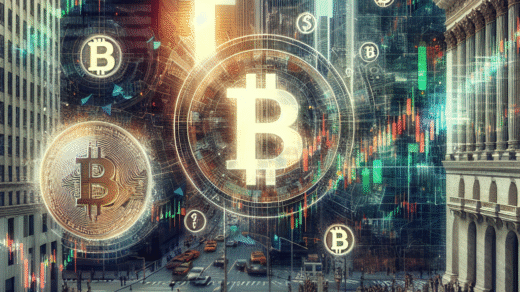Introduction: The Need for Safe Markets in Cryptocurrency
In the ever-evolving world of cryptocurrency, the industry has long debated the necessity of “safe havens” versus “safe markets.” While a safe haven connotes a place to hide from risks, a safe market represents a robust environment conducive to growth and innovation. Understanding this distinction is essential for jurisdictions aiming to attract substantial capital investments. By prioritizing market safety, rather than merely seeking regulatory loopholes, regions can cultivate a trustworthy ecosystem that fosters long-term success.
The Regulatory Tug-of-War
For over a decade, the cryptocurrency sector has been embroiled in a regulatory tug-of-war. Innovators advocate for minimal oversight to avoid stifling technological advancements, while skeptics warn that excessive leniency can expose investors to severe risks. The infamous collapse of the FTX crypto exchange in November 2022 exacerbated these concerns, highlighting the need for a balanced regulatory approach.
Many crypto businesses, caught in the middle, have adopted a “safe haven” strategy by operating in jurisdictions with minimal regulations. While this approach offered short-term advantages, it also led to markets where investor protection was sidelined, enforcement was inconsistent, and credibility was compromised. Consequently, a trust deficit now looms heavily over the industry.
The UAE’s Balanced Regulatory Framework
The United Arab Emirates (UAE) has emerged as a leader in the quest for a balanced regulatory framework. Instead of hastily establishing a permissive environment, the UAE has opted for a deliberate and strategic approach. The establishment of the Virtual Assets Regulatory Authority (VARA) in Dubai and the Abu Dhabi Global Market (ADGM) exemplifies their commitment to creating an ecosystem that prioritizes safety and supervision.
By fostering an environment that attracts serious capital without compromising on regulations, the UAE sends a clear message: innovation is welcome, but accountability is non-negotiable. This approach is particularly appealing to institutional investors, such as pension funds and sovereign wealth funds, that seek proven markets with reliable regulations.
A Shift in Investor Behavior
The behavior of capital flows has evolved significantly since the early days of cryptocurrency. Retail investors might have once flocked to offshore exchanges and high-risk ventures, but today’s institutional investors prioritize trust and stability. They prefer markets where rules are transparent, custodians meet international standards, and enforcement is consistent.
By positioning itself as a safe market rather than a mere safe haven, the UAE is attracting serious investors. The multi-layered regulatory environment allows crypto businesses to select the regulatory framework that best suits their operational needs, thereby promoting genuine innovation and healthy competition.
The Decline of Loophole Jurisdictions
The notion that weak regulatory environments could benefit the crypto industry is rapidly losing favor. On the contrary, jurisdictions known for regulatory loopholes are now viewed as liabilities. Global regulators are increasingly collaborating, sharing intelligence, and applying pressure on markets that undermine standards.
Notably, the International Organization of Securities Commissions (IOSCO) has heightened its focus on crypto markets, emphasizing the importance of robust regulations. Retail investors, having witnessed the fallout from high-profile exchange collapses, are now more cautious than ever. Markets that rely on being “easier” are under scrutiny, as illustrated by Malta’s recent criticism from the European Securities and Markets Authority (ESMA) for insufficient due diligence when granting licenses to crypto firms.
The Future of Crypto: Integration into Mainstream Finance
The next phase of cryptocurrency adoption is poised to be defined by its integration into mainstream finance, rather than speculative trading. This evolution will likely see the emergence of stablecoins backed by tangible reserves, tokenized assets with clear legal protections, and exchanges capable of withstanding rigorous institutional due diligence.
The emphasis on safe markets aligns with the interests of long-term investors, fostering durable trust and raising industry standards. By building strong, transparent markets, the cryptocurrency sector can pave the way for a more sustainable future.
Building a Sustainable Future for Cryptocurrency
While cryptocurrency is often touted as borderless, capital flows are not. Money gravitates toward markets with established credibility and effective regulation. Jurisdictions that recognize this reality will ultimately emerge as leaders in the crypto landscape.
Effective oversight is not a barrier to innovation; rather, it serves as the foundation for growth. The UAE’s proactive regulatory stance should inspire other markets to rethink their strategies. Instead of chasing companies with lax regulations, jurisdictions should aim to attract them through robust frameworks that emphasize safety and trust.
Conclusion: The Call for Safe Markets
The cryptocurrency industry does not require additional safe havens to hide in. Instead, it needs strong markets capable of supporting ambitious projects, earning investor trust, and facilitating scalable growth. By prioritizing safety and transparency, the next wave of capital investment will undoubtedly flow into jurisdictions that foster such an environment.
Meta Description: “Discover why safe markets, not safe havens, are crucial for the future of cryptocurrency. Explore the UAE’s balanced regulatory framework and how it attracts serious capital while ensuring investor protection.”







